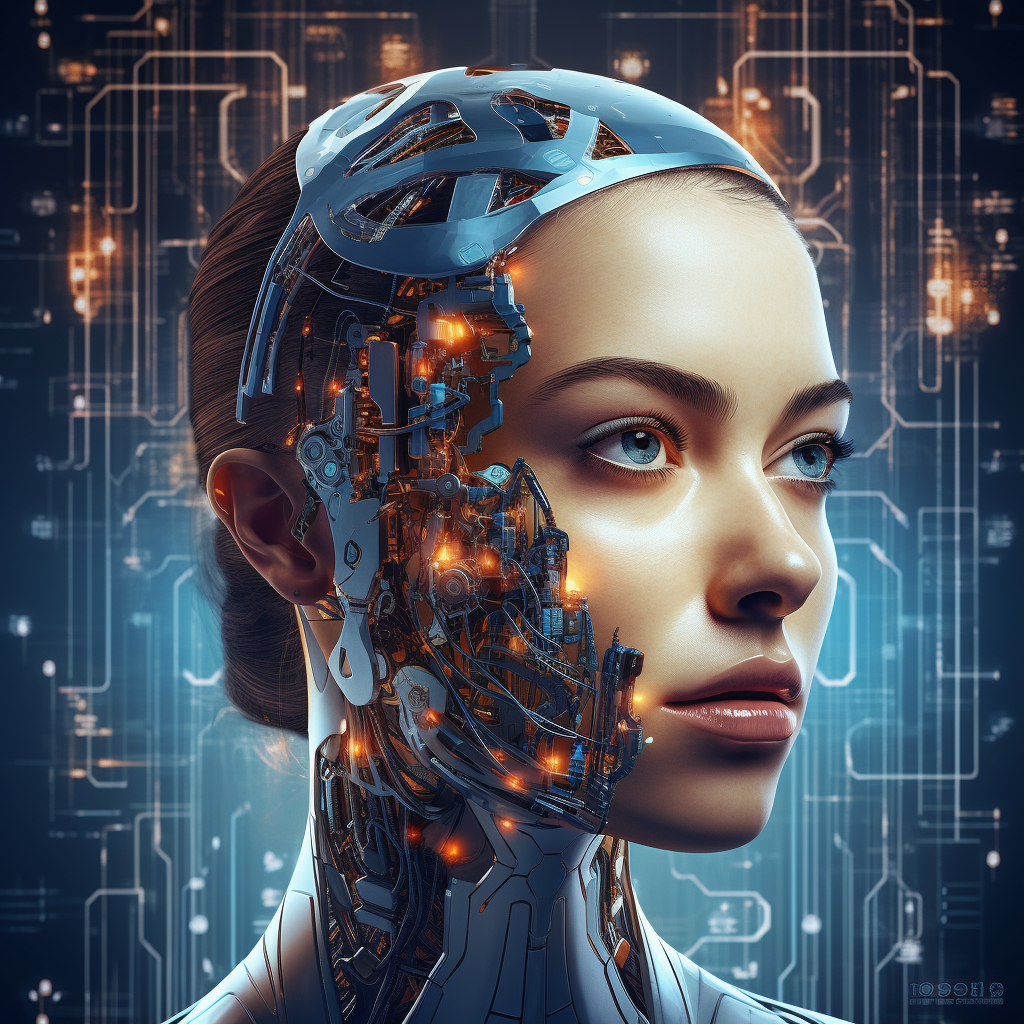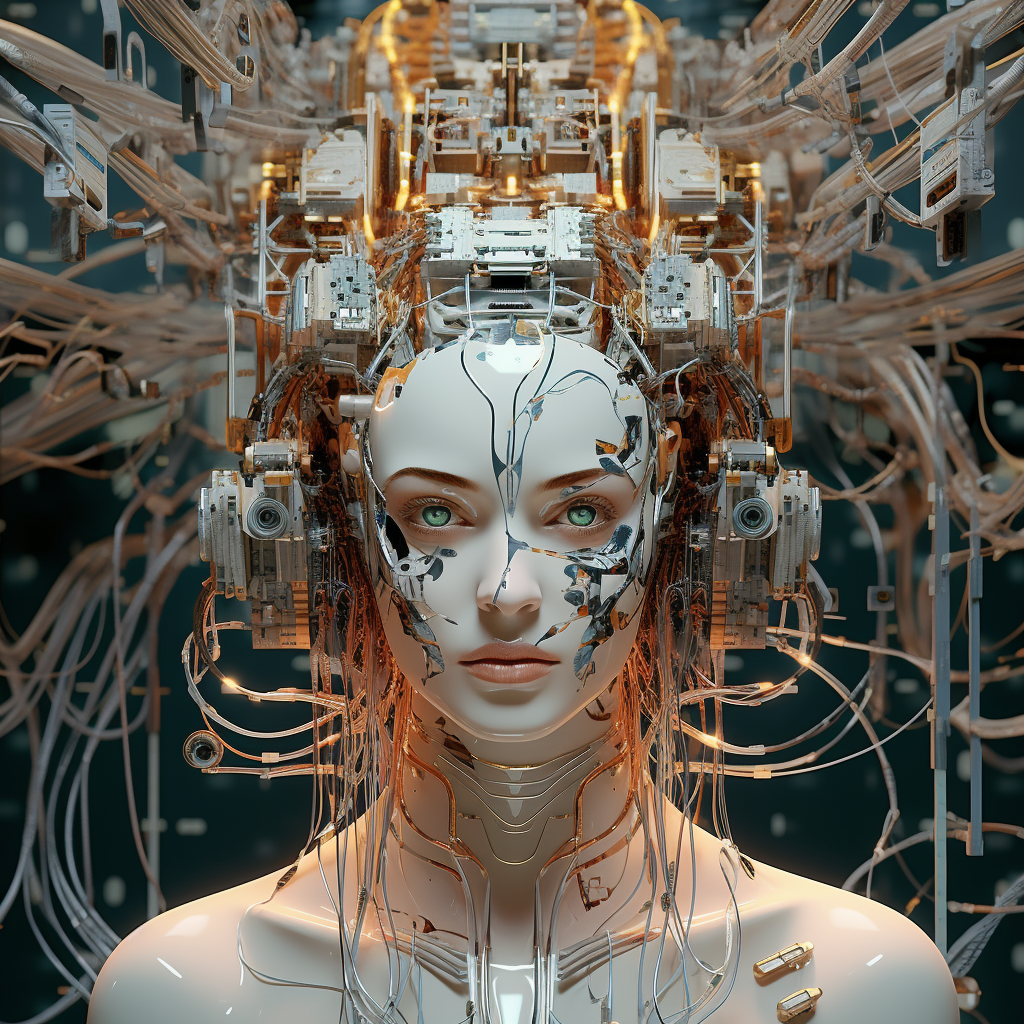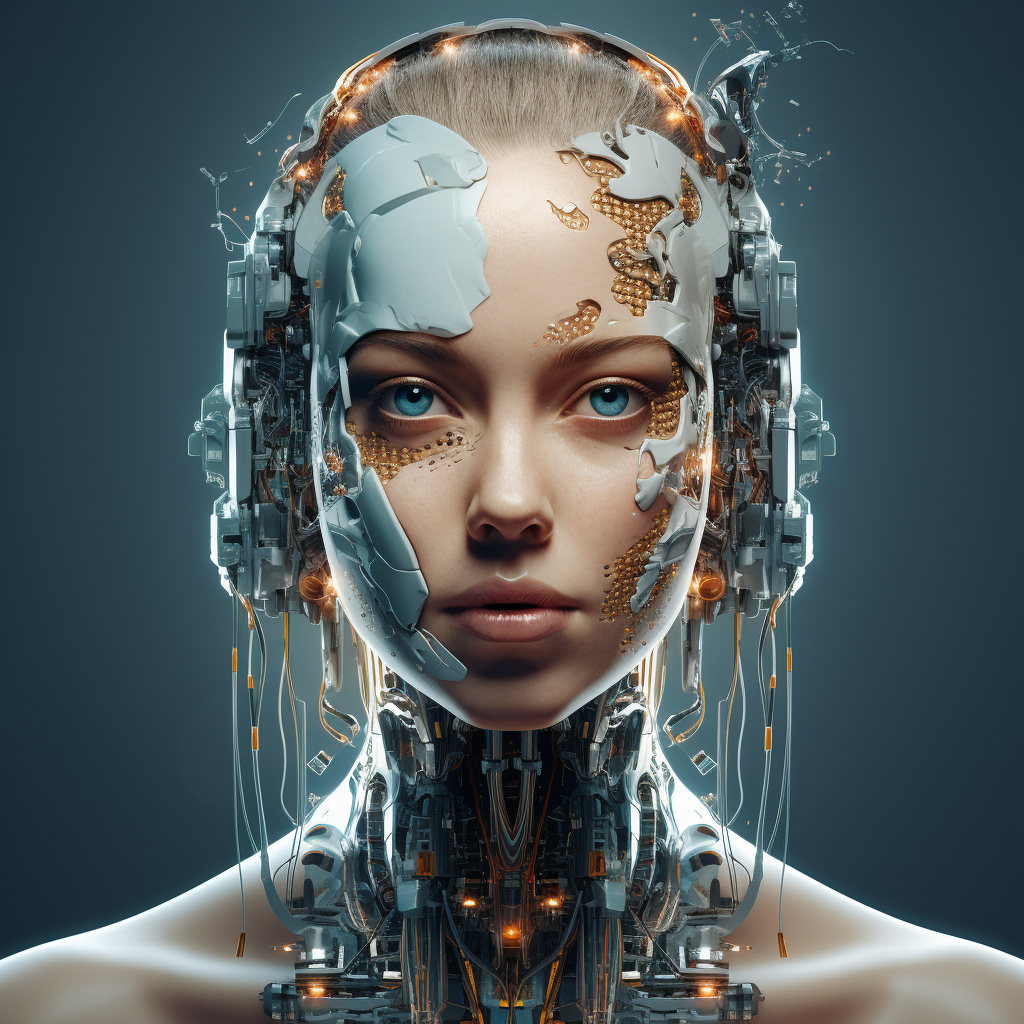Contents
Introduction
1.1 Brief on the Evolution of Trade
Trading has been a cornerstone of civilization since ancient times, ever-changing and evolving. It began as barter, transitioning into physical currencies, followed by the invention of paper money and banking, and eventually the digitization of money in our present era. These advances were prompted by societal, technological, and economic factors, reflecting humanity’s ingenuity in adapting to new environments and needs. Today, we are at the forefront of another transformative era in trading, steered by artificial intelligence (AI).
Table 1.1: Evolution of Trade
| Era | Form of Trade |
|---|---|
| Ancient Times | Barter |
| The Age of Coinage | Physical Currencies |
| Middle Ages | Invention of Paper Money |
| Industrial Age | Banking |
| Digital Age | Digital Currencies |
| AI Age | AI-driven Trade |
1.2 Overview of AI Technologies
AI refers to machines or software programs that mimic human intelligence—learning from experiences, interpreting complex data, and executing tasks that normally require human intellect. There are two categories of AI: narrow AI, which is designed to perform specific tasks (like voice recognition), and general AI, which can comprehend, learn, and carry out any intellectual task a human being can.
Table 1.2: Categories of AI
| Type of AI | Characteristics |
|---|---|
| Narrow AI | Performs specific tasks |
| General AI | Capable of any intellectual task |
1.3 The Intersection of AI and Trade
The intersection of AI and trade has opened up a new frontier. AI is revolutionizing the world trading system, influencing all sectors from stock trading to supply chains. This change is happening at an incredible speed, driven by the relentless pursuit of efficiency, accuracy, and profits. The following chapters will delve into the various aspects of AI’s influence on world trade, discussing direct and indirect impacts, presenting case studies, exploring challenges, and looking at the future of AI in trading.

Understanding AI in Trade
2.1 AI in the Global Economy
AI is not just a technological revolution; it is a fundamental shift in the way businesses operate and economies function. By automating routine tasks, providing insights through data analysis, and creating new products and services, AI is redefining economic landscapes worldwide.
Table 2.1: Impact of AI on Various Economic Factors
| Economic Factor | AI Impact |
|---|---|
| Job Market | Automation leading to job transformation |
| Productivity | Increased efficiency and output |
| Innovation | New product and service development |
2.2 Role of AI in Trading
AI’s role in trading is significant and multidimensional. It aids traders by providing real-time data analysis, making predictions based on historical data, executing trades at incredible speeds, and even managing risk. These aspects all contribute to improving the efficiency and potential profitability of trading.
Table 2.2: Role of AI in Trading
| Role | AI Contribution |
|---|---|
| Data Analysis | Real-time, detailed insights |
| Predictive Analytics | Forecasts based on historical data |
| Trade Execution | High-speed, high-frequency trades |
| Risk Management | Intelligent risk prediction and mitigation |
AI’s Direct Impacts on World Trading
3.1 Efficiency and Speed
One of AI’s most profound impacts on world trading is the enhanced efficiency and speed it brings. High-frequency trading, which relies heavily on AI and algorithmic trades, allows thousands of transactions to be executed in milliseconds, far beyond human capabilities.
Table 3.1: Impact of AI on Trading Speed and Efficiency
| Aspect | Without AI | With AI |
|---|---|---|
| Speed | Transactions executed in seconds or minutes | Transactions executed in milliseconds |
| Efficiency | Limited by human capacity | Enhanced through automation and advanced algorithms |
3.2 Predictive Analytics
AI, coupled with machine learning, has given rise to predictive analytics in trading. These systems can process vast quantities of historical data to forecast future market trends, providing traders with insights that aid in decision-making.
Table 3.2: Comparison of Human and AI in Predictive Analytics
| Aspect | Human Analysis | AI Analysis |
|---|---|---|
| Data Processing | Limited capacity | Can handle vast quantities of data |
| Predictive Accuracy | Based on experience and intuition | Based on objective data analysis |
3.3 Risk Management
AI has revolutionized risk management in trading. By constantly analyzing market fluctuations and historical trends, AI systems can warn traders about potential risks, even automating actions to mitigate them.
Table 3.3: Risk Management: Humans vs AI
| Aspect | Human Management | AI Management |
|---|---|---|
| Response Time | Slower, reactive approach | Real-time, proactive approach |
| Risk Mitigation | Based on experience and caution | Data-driven and automated |
3.4 Algorithmic Trading
Algorithmic trading, driven by AI, follows predefined instructions to execute trades at high speeds and frequencies. This strategy allows for more trades, increased speed, reduced costs, and minimized human error.
Table 3.4: Algorithmic Trading Impact
| Impact | Description |
|---|---|
| Trade Volume | Ability to process numerous trades in milliseconds |
| Speed | High-speed trading to capitalize on market changes |
| Cost | Reduction in trading costs through automation |
| Error | Minimization of human error in trading |

AI’s Indirect Impacts on World Trading
4.1 Global Supply Chains
AI’s influence on global supply chains significantly impacts international trade. Predictive analytics and real-time tracking powered by AI enhance supply chain efficiency, reduce waste, and aid in proactive decision-making.
Table 4.1: Impact of AI on Global Supply Chains
| Aspect | Without AI | With AI |
|---|---|---|
| Efficiency | Limited by human and logistical constraints | Enhanced by AI’s predictive analytics and real-time tracking |
| Waste Management | More potential for waste due to less accurate forecasting | Reduction in waste due to precise forecasting |
| Decision-Making | Reactive, based on set parameters | Proactive, enabled by real-time data and predictive analytics |
4.2 Digital Commerce
Digital commerce is another area indirectly affected by AI in world trading. From personalized shopping experiences driven by AI algorithms to chatbots providing customer service, AI is transforming the way businesses interact with consumers.
Table 4.2: Impact of AI on Digital Commerce
| Aspect | Without AI | With AI |
|---|---|---|
| Personalization | Limited by lack of data | Enhanced by AI’s ability to analyze customer data and predict preferences |
| Customer Service | Dependent on human resources | Augmented by AI chatbots providing round-the-clock service |
| Consumer Interaction | Static, one-size-fits-all approach | Dynamic, personalized interactions |
Case Studies: AI Technologies in Action
5.1 AI in Stock Market Trading
The advent of AI in stock market trading has transformed the landscape significantly. AI algorithms analyze data trends and make trading decisions in real-time. Robo-advisors like Betterment and Wealthfront use AI to create personalized investment strategies.
Table 5.1: Benefits of AI in Stock Market Trading
| Benefit | Description |
|---|---|
| Real-Time Decision-Making | AI algorithms analyze market trends and make trading decisions instantaneously |
| Personalization | Robo-advisors provide customized investment strategies |
5.2 AI in Forex Trading
AI is having a similar impact in the forex market. Traders and brokers use AI algorithms for risk assessment, market analysis, and trade execution. For example, systems like ROFX and Trade Ideas use AI to assist traders in these areas.
Table 5.2: Impact of AI in Forex Trading
| Impact | Description |
|---|---|
| Risk Assessment | AI assists in identifying and managing potential market risks |
| Market Analysis | AI systems can analyze complex forex markets in real-time |
| Trade Execution | AI algorithms execute trades quickly and efficiently |
5.3 AI in Commodity Trading
Commodity trading is another sector benefiting from AI. Traders are using AI for predictive analytics to forecast commodity prices and trends. For instance, Cargill has used AI to predict grain trading volumes and prices.
Table 5.3: AI in Commodity Trading
| Benefit | Description |
|---|---|
| Predictive Analytics | AI is used to forecast commodity prices and trends |
| Efficiency | AI algorithms execute trades swiftly, minimizing delays and potential slippages |
The Challenges of AI in Trading
6.1 The Issue of Trust
Despite its many advantages, AI has to overcome trust issues. Since trading often involves large sums of money, traders and investors may hesitate to leave decisions to an AI system, fearing unforeseen consequences or system errors.
Table 6.1: Trust Issues in AI Trading
| Aspect | Description |
|---|---|
| Reliability | Concerns over potential system errors |
| Lack of Control | Unease about ceding decision-making control to AI |
| Unforeseen Consequences | Worries about AI making decisions that humans wouldn’t |
6.2 Regulatory Challenges
As AI systems become more integral to trading, it poses regulatory challenges. Regulating bodies worldwide are grappling with how to create rules that protect investors and maintain market integrity without stifling innovation.
Table 6.2: Regulatory Challenges in AI Trading
| Challenge | Description |
|---|---|
| Regulation Development | Difficulty in developing rules for a rapidly evolving technology |
| Enforcement | Challenge in overseeing AI-driven trading activities |
| Innovation vs. Protection | Balancing investor protection with technological advancement |
6.3 Ethical Considerations
AI in trading also raises ethical questions. These include concerns about AI systems potentially being programmed to manipulate markets or engage in insider trading.
Table 6.3: Ethical Considerations in AI Trading
| Ethical Concern | Description |
|---|---|
| Market Manipulation | Potential for AI systems to be used for manipulative practices |
| Insider Trading | Concerns about the misuse of AI’s predictive abilities |
The Future of AI in Trading
7.1 AI’s Growing Influence
The influence of AI in trading is expected to grow as technology evolves and traders become more comfortable with its advantages. We anticipate more sophisticated algorithms, higher speeds of execution, and advanced predictive analytics.
Table 7.1: Future Trends in AI Trading
| Trend | Description |
|---|---|
| Sophisticated Algorithms | Continued development of complex AI trading algorithms |
| High-Speed Execution | Further increase in trading speed and efficiency |
| Advanced Predictive Analytics | Enhanced forecasting capabilities using AI |
7.2 Emerging AI Technologies
New AI technologies like quantum computing and deep learning have the potential to revolutionize trading. Quantum computing could enable even faster, more complex calculations, while deep learning could improve predictive analytics and decision-making.
Table 7.2: Emerging AI Technologies in Trading
| Technology | Potential Impact |
|---|---|
| Quantum Computing | Increased computational speed and complexity |
| Deep Learning | Improved predictive analytics and decision-making |
7.3 Regulatory Evolution
With the growing influence of AI, regulations will need to adapt. Regulatory bodies worldwide will face the challenge of ensuring fair and ethical trading while fostering technological advancement.
Table 7.3: Regulatory Trends in AI Trading
| Trend | Description |
|---|---|
| Developing Rules | Creation of regulations to govern AI trading |
| Enforcing Compliance | Need for oversight of AI trading activities |
| Balancing Innovation | Challenge to balance technological advancement with investor protection |
This article has delved into the various aspects of AI’s influence on world trade, discussing direct and indirect impacts, presenting case studies, exploring challenges, and looking into the future. The continued evolution of AI technologies promises to keep this an exciting and evolving field in the years to come.

FAQs
- What is AI in trading? AI in trading refers to the use of artificial intelligence technologies to automate and enhance trading activities, including data analysis, predictive analytics, trade execution, and risk management.
- What are some benefits of AI in trading? Benefits of AI in trading include increased efficiency and speed of transactions, improved predictive analytics, automated risk management, and enhanced decision-making capabilities.
- What are the challenges of AI in trading? Challenges include building trust with users, navigating regulatory landscapes, and addressing ethical considerations such as potential market manipulation.
- What is the future of AI in trading? The future of AI in trading looks promising, with more sophisticated algorithms, faster execution speeds, advanced predictive analytics, and the potential impact of emerging technologies like quantum computing and deep learning.
- How does AI influence global trade? AI influences global trade by enhancing the efficiency of global supply chains, transforming digital commerce, and revolutionizing trading practices, leading to significant impacts on the global economy.



